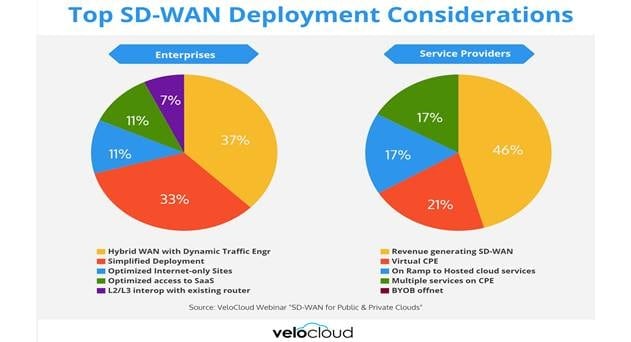Carriers are aggressively investing in software-mediated network solutions, 5G and IoT to remain competitive as enterprises realize the benefits offered by thesetechnologies over the next five years, according to Technology Business Research's (TBR) latest Enterprise Operator Benchmark.
Strategic data yielded the highest growth rate of benchmarked enterprise service segments in 1Q17, rising 6.6% year-to-year, spurred by demand for VPN, Ethernet and software-mediated network service ssuch as SD-WAN.
”The main justification for investment in NFV and SDN by operators is the incremental revenue-generation opportunities and cost savings these technologies provide,” said TBR Analyst Steve Vachon. “Offering software-mediated network services is becoming a necessity for enterprise operators to maintain market share, as most benchmarked companies have either commercially launched orannounced plans to offer SD-WAN services.”
IT services remained the largest enterprise segment in 1Q17 with combined revenue among benchmarked companies rising 4.7% year-to-year to $12.5 billion due to growth in IoT, cloud and security.
Pricing pressures, particularly in the U.S., have caused some carriers to move entirely from the IaaS market, such as Verizon divesting its remaining cloud business to IBM. Carriers including BT, CenturyLink and AT&T are becoming more willing to play a supportive role to pure plays such as AmazonWeb Services, concentrating on augmenting broader hybrid IT environments by providing networkconnectivity, security and orchestration platforms instead of serving as the IaaS provider.
The benchmark also examines key investment areas operators are targeting to enhance their enterprise portfolios including 5G, data centers and the deployment of IoT network technologies including LTE-M,NB-IoT and LoRa. Most carriers have begun pre-standards 5G testing, and commercialized fixed wirelessis expected to become available in 2018.
Carriers are aggressively competing to gain high-bandspectrum to support 5G, exemplified by Verizon nearly doubling AT&T’s initial bid to acquire StraightPath Communications. Early 5G use cases will focus on enhancing delivery for existing services such asinternet and cloud while in the long term supporting emerging technologies such as augmented realityand virtual reality, and autonomous driving.


















